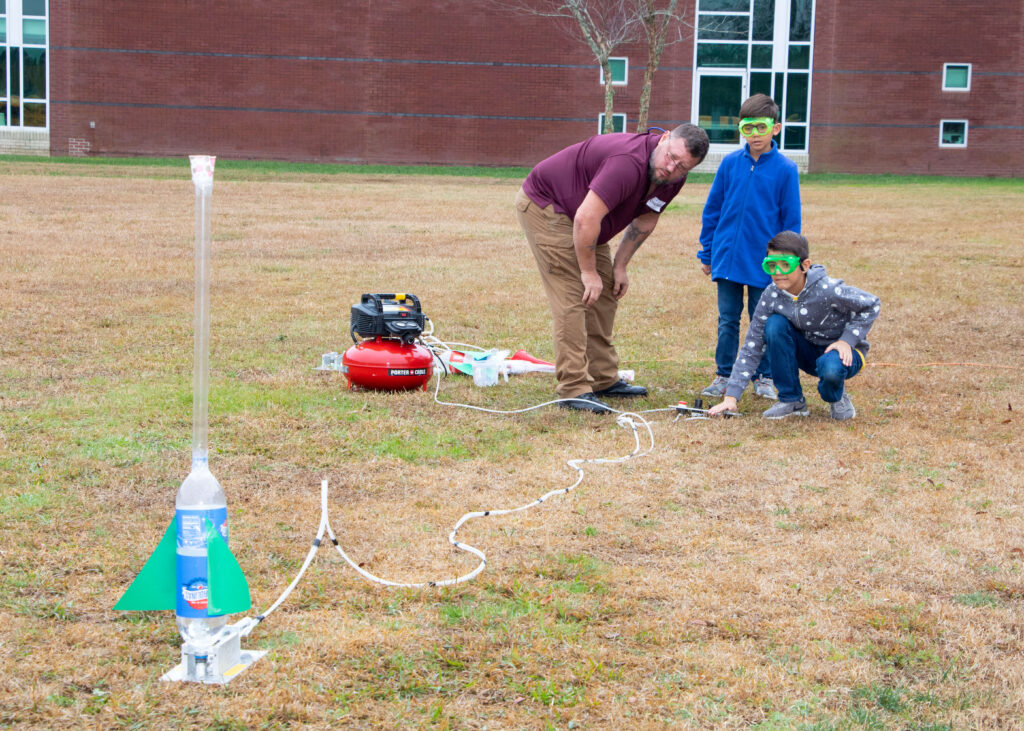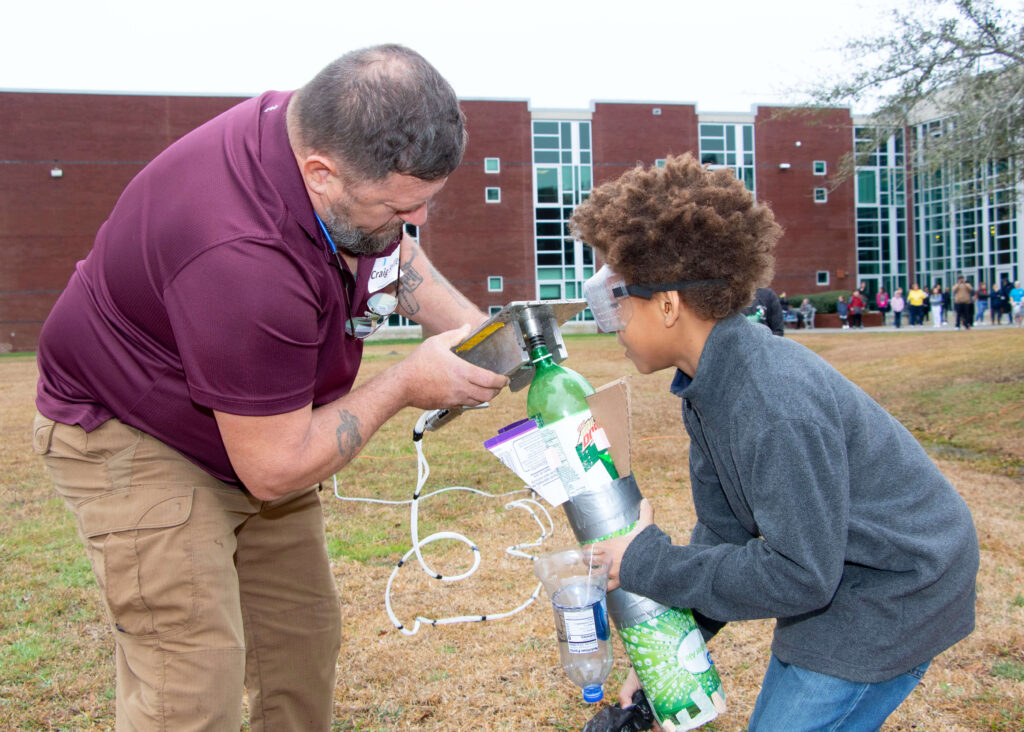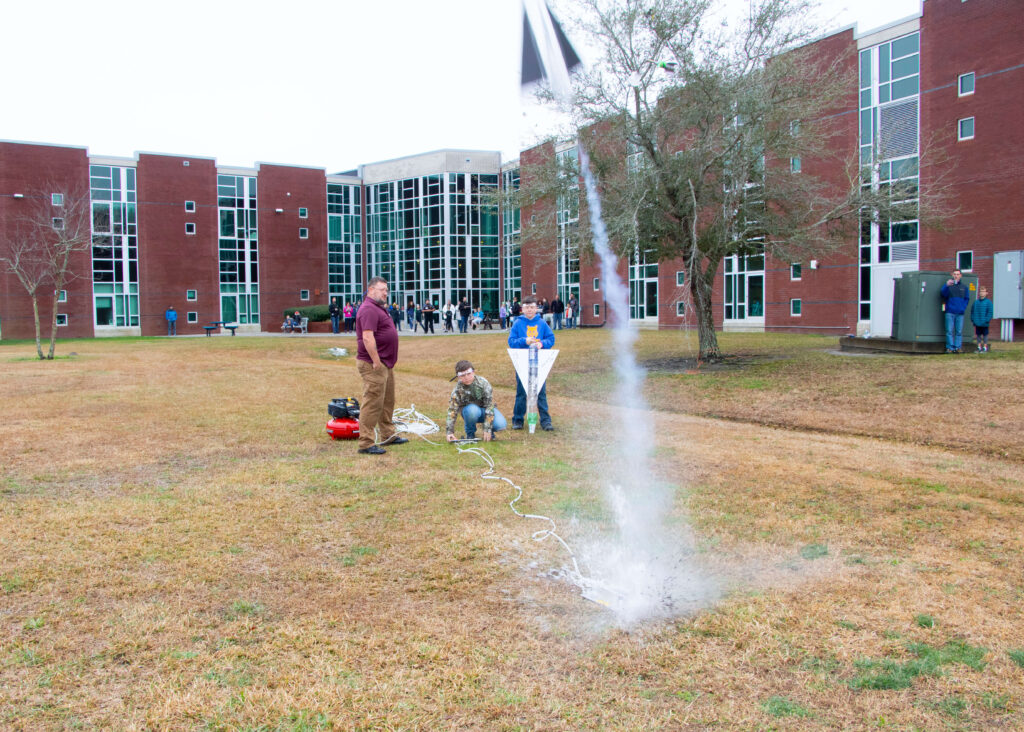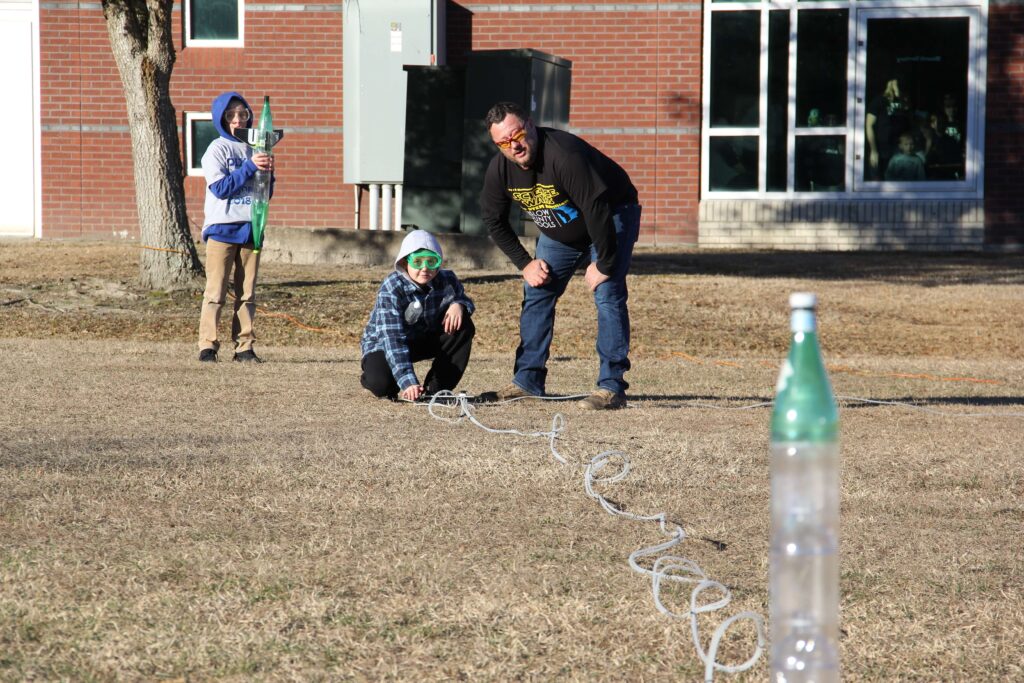3,2,1, Blast Off!
Division: A – Elementary
NC Essential Standards Alignment: 3.P.1, 5.P.1, Science as Inquiry
Event Rules and Score Sheets: See 2023 Division A Rule Manual
Clarifications: The pressure vessel must be a 1-liter carbonated beverage bottle. A single bottle rocket can be launched twice or you can launch two different bottle rockets.
Description:
Prior to the tournament, teams will construct up to two rockets designed to stay aloft for the greatest amount of time.
*** Note: Some soda manufacturers have changed the size of the neck of their bottles. Please make sure the inner diameter of your bottle neck is still 2.2 cm, not the new reduced size of 2.1 cm. The 2.1 cm necks will not fit on the launcher. The easiest way to test this is by sliding a piece of 1/2 inch PVC into the bottle. If it fits loosely, the bottle will go on the launcher. If the PVC sticks and you have to apply any force to slide the PVC in, the bottle will not go on the launcher.***
Materials:
Must bring up to 2 rockets made out of 1-liter carbonated beverage bottle and labels (if removed), and safety glasses (rated Z87+). Teams may also bring funnels, measuring cups, and/or other tools to help prepare their rockets.
Event Leaders will provide a water rocket launcher, water, score sheets, and timers.
Scoring:
High score wins. Score will be determined by highest time aloft of the 2 rockets in seconds (measured in tenths of seconds).
Common Mistakes:
- Be sure that the pressure bottle remains intact. Repeated testing and hard landings can damage your pressure bottle. Check it frequently for scratches and weak spots that may compromise the structural integrity, and replace the bottle as needed.
- Find the ideal water level for your rocket. While 100% air will give you the maximum potential energy, it has very little mass and therefore very little momentum to carry the rocket. Likewise, 100% water will have great mass, but very little potential energy to give it momentum. Don’t wait until the day of the competition to decide how much water to use!
- If you remove the label from your pressure bottle, be sure to bring it to the competition or you will not be allowed to launch the rocket.
- Remember, only one launch is allowed per rocket! If you want to use both launch attempts, you must bring a second rocket! Varsity and JV teams must each have their own rockets and may not borrow each other’s rockets or rocket parts to launch.
Recommendations:
- This event requires safety glasses, meaning the kind that look like sunglasses will work just fine. These are MUCH easier to see out of. Your local home improvement store carries cheap versions for under $4. Safety goggles (the chemical splash kind that most schools have) have a tendency to fog up, making it hard to see.
- For transporting rockets with less risk of damage, glue/screw a bottle cap to a cardboard or wood base and simply screw your rocket onto it to make it stand up. For added protection, place this entire setup inside a 5-gallon bucket to protect fins, etc.
- Rather than trying to cut holes through your rocket’s non-pressurized plastic components, use a hot needle or hot ice pick to poke a hole with smooth, rounded edges.
- Angling your fins slightly to one side will cause the rocket to spiral on its way up, creating stability much like throwing a football in a spiral.
Event Resources:
Nerds, Inc (excellent rocket launchers like the ones used at NCSO tournaments)
Media:




